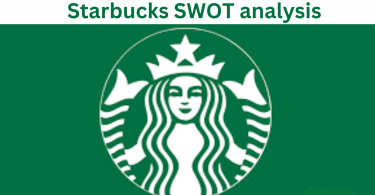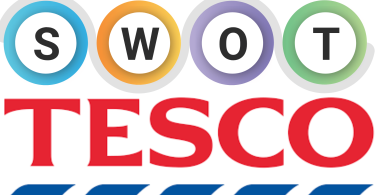In the ever-evolving coffee industry, Tim Hortons, a Canadian icon, faces unique opportunities and challenges.
A comprehensive SWOT analysis in 2024 is essential to understanding the brand’s current position, identifying its competitive advantages, and anticipating potential threats.
This SWOT analysis allows Tim Hortons to make informed strategic decisions and ensure its continued success by carefully examining its strengths, weaknesses, opportunities, and threats.
Tim Hortons: A Canadian Coffee and Doughnut Icon
History
Tim Hortons, a beloved Canadian institution, was founded in 1964 by Tim Horton, a former professional hockey player, and Ron Joyce, a retired police officer.
The first restaurant opened in Hamilton, Ontario, and quickly gained popularity for its freshly brewed coffee and made-from-scratch doughnuts.
Activities
Tim Hortons is a quick-service restaurant chain that specializes in coffee, baked goods, and breakfast sandwiches. Its menu includes lunch items such as soups, sandwiches, and wraps.
The company is renowned for its iconic Timbits (mini doughnuts) and its commitment to providing a welcoming atmosphere for its customers.
Competitors
Tim Hortons faces stiff competition from other major coffee chains, including:
- Starbucks: A global coffee giant known for its premium coffee and diverse menu.
- Dunking Donuts: Another famous coffee and doughnut chain with a strong presence in the United States.
- McDonald’s: A fast-food giant that has expanded its coffee offerings in recent years.
- Second Cup: A Canadian coffee chain that competes directly with Tim Hortons in the domestic market.
Suppliers
Tim Hortons relies on a network of suppliers to provide essential ingredients and products, including:
- Coffee beans: The company sources coffee beans from various regions worldwide to ensure a consistent quality product.
- Dairy products: Tim Hortons uses local suppliers’ milk, cream, and butter.
- Baked goods: The company partners with suppliers to provide a variety of doughnuts, muffins, and other pastries.
- Paper products: Tim Hortons uses disposable cups, plates, and napkins from suppliers.
Customers
Tim Hortons primarily targets a broad range of customers, including:
- Daily commuters: Many rely on Tim Hortons for their morning coffee and breakfast.
- Families: Tim Hortons offers a variety of family-friendly menu items.
- Students: The chain’s convenient locations and affordable prices make it popular.
- Office workers: Tim Hortons is a popular destination for workers seeking a quick caffeine fix.
Strategies
Tim Hortons has implemented several strategies to maintain its competitive edge:
- Expansion: The company has expanded its domestic and international operations, opening new restaurants in various markets.
- Innovation: Tim Hortons has introduced new menu items and limited-time offers to keep customers engaged.
- Technology: The company has embraced technology, offering mobile ordering and loyalty programs.
- Community involvement: Tim Hortons is actively involved in community initiatives and supports various charitable causes.
Key Figures
As of 2023, Tim Hortons:
- Operates over 5,000 restaurants worldwide.
- Has a significant presence in Canada, the United States, and other countries.
- Generates billions of dollars in annual revenue.
- Employs tens of thousands of people.
SWOT analysis of Tim Hortons
We now turn to the results of Tim Horton’s SWOT analysis:
The internal analysis of Tim Hortons
The main goal of an internal analysis for Tim Horton is to gain a deep understanding of its strengths and weaknesses, by evaluating its internal factors.
This self-assessment helps Tim Horton management make informed decisions and develop effective strategies for the future.
Strengths of Tim Hortons
Tim Hortons, a beloved Canadian institution, boasts several vital strengths contributing to its enduring success. Here are some of its most significant advantages compared to its competitors:
Strong Brand Recognition and Loyalty:
Tim Hortons has become synonymous with Canadian culture, fostering a deep sense of loyalty among its customers. The brand has cultivated a solid emotional connection with consumers, making it more than just a place to grab a coffee.
Recent surveys and studies have consistently shown that Tim Hortons ranks high in customer satisfaction and loyalty.
Extensive Network and Prime Locations:
Tim Hortons has a vast network of stores, often located in convenient and high-traffic areas. Tim Hortons’ widespread presence ensures that customers can easily find a location, making it a go-to destination for daily needs.
Diverse Menu Offerings:
Tim Hortons is known for its iconic coffee and doughnuts, which have been popular for decades. The company has also diversified its menu to include breakfast sandwiches, soups, and other food items, catering to a broader range of customer preferences.
Community Involvement and Social Responsibility:
Tim Hortons is actively involved in various community initiatives, supporting local causes and events. This commitment to social responsibility has helped to enhance the brand’s reputation and build goodwill.
Efficient Operations and Cost Management:
Tim Hortons has developed efficient operational procedures to minimize costs and maximize profitability. The company also has a robust supply chain network, ensuring a reliable and cost-effective supply of ingredients.
Weaknesses of Tim Hortons
Despite its many strengths, Tim Hortons has its weaknesses. Here are some areas where the company could potentially improve:
Perception of Unhealthy Offerings
Health-Conscious Consumers: Recently, there has been a growing trend towards healthier food and beverage options.
Tim Hortons’ traditional menu, which often includes high-calorie and sugary items, may not align with the preferences of health-conscious consumers. Studies have shown that many consumers are increasingly seeking healthier alternatives in their food choices.
Limited International Expansion
While Tim Hortons has expanded its presence in specific international markets, its growth has been relatively limited compared to some of its competitors.
Entering new markets can be challenging, especially when adapting to different cultural preferences and consumer behaviors.
Dependency on Coffee and Doughnuts
While coffee and doughnuts have been the foundation of Tim Hortons’ success, overreliance on these products can make the company vulnerable to changing consumer preferences.
So, the company’s ability to diversify its menu and introduce new products is crucial for long-term growth.
Pricing Pressure
Tim Hortons faces pressure to maintain competitive pricing in a market with many options. Rising costs of ingredients and labor can make it challenging to keep prices low without sacrificing profitability.
The external analysis of Tim Hortons
The primary objective of conducting an external analysis for Tim Horton is to understand external factors beyond its control that could influence its success in the global coffee industry.
This analysis helps Tim Horton management make well-informed decisions regarding its strategy, operations, and future trajectory. The external analysis delves into two main aspects: opportunities and threats.
Let’s move on to Tim Horton’s current and potential opportunities and threats without further ado.
Opportunities of Tim Hortons
The global coffee industry continues to evolve rapidly, presenting numerous opportunities for Tim Hortons to expand its reach and enhance its market position.
According to our research, here are some critical areas of focus:
Digital Transformation:
Implementing advanced mobile ordering apps and platforms can streamline the customer experience and increase efficiency.
Businesses can foster customer loyalty and drive repeat business by leveraging technology to offer personalized rewards and promotions.
Additionally, utilizing data analytics to gain insights into customer preferences and behavior can inform strategic decision-making, creating a harmonious strategy that enhances every aspect of the customer journey.
Sustainability and Ethical Sourcing:
Consumers increasingly demand coffee from sustainable and ethical suppliers, and Tim Hortons can strengthen its brand reputation by prioritizing ethical sourcing practices.
Further, implementing environmentally friendly initiatives, such as reducing waste and conserving energy, can appeal to socially conscious consumers and enhance the brand’s appeal.
Expansion into Emerging Markets:
In the Asia-Pacific region, areas such as China, India, and Southeast Asia present significant opportunities for growth in coffee consumption. Tim Hortons can leverage these emerging markets by adapting its offerings to align with local tastes and preferences.
Meanwhile, the Middle East and Africa are witnessing swift urbanization and economic advancement, setting the stage for increased coffee consumption.
Product Innovation and Customization:
By continuously introducing innovative coffee flavors and blends, businesses can attract new customers and keep existing ones engaged.
Also, offering customers the ability to customize their drinks and food items can significantly enhance their satisfaction and loyalty, creating a more personalized experience.
Partnerships and Collaborations:
By collaborating with other brands or businesses, Tim Hortons can reach new customer segments and expand its product offerings through strategic alliances.
Moreover, partnering with famous brands or celebrities for limited-time partnerships can generate buzz and drive sales, further enhancing their market presence.
Tim Hortons can position itself for long-term success in the competitive global coffee industry by focusing on these areas.
Threats of Tim Hortons
Tim Hortons, a prominent player in the global coffee industry, faces various threats, risks, and challenges that could impact its long-term success.
According to our investigation, we have found the following elements:
Rising Costs:
Inflation leads to increased costs of raw materials, labor, and energy, which can erode profit margins. Additionally, global supply chain disruptions, such as those caused by pandemics or geopolitical tensions, can further contribute to higher costs and product shortages, compounding businesses’ challenges.
Intensifying Competition:
Established coffee chains such as Starbucks and Dunkin’ Donuts continue expanding their global presence, thereby increasing competition.
At the same time, smaller local coffee shops are gaining traction by offering unique experiences and personalized service.
Changing Consumer Preferences:
Consumers are becoming more health-conscious, seeking coffee alternatives that are lower in caffeine, have fewer calories, and contain natural ingredients.
Simultaneously, there is growing concern about ethical sourcing and sustainability, which is pressuring companies to adopt responsible practices.
This shift towards health-conscious trends and ethical consumption reflects a broader awareness and desire for products that are both good for the individual and the planet.
Economic Downturns:
During economic downturns like COVID-19, consumers often reduce their spending on non-essential items such as coffee. This tendency is coupled with a shift in priorities, as economic uncertainty can lead to changes in consumer behavior and spending habits.
Regulatory Challenges:
Increasing taxes on sugary drinks or other products can impact profitability, while stricter environmental regulations can raise operating costs and limit business expansion.
Technological Disruptions:
Innovative business models, such as subscription services or coffee delivery apps, can disrupt traditional coffee shops.
At the same time, increased automation in the coffee industry might result in job losses and alter the customer experience, presenting challenges and opportunities for growth and adaptation.
Climate Change:
Climate change is profoundly impacting coffee production by altering growing conditions and increasing the risk of crop failure.
More extreme weather events, such as droughts and floods, pose environmental risks that can disrupt operations and increase costs.
Geopolitical Risks:
Trade wars, characterized by disputes and tariffs, influence the cost of raw materials and finished products. At the same time, political instability, particularly in crucial coffee-producing regions, has the potential to disrupt supply chains and cause price fluctuations.
By understanding these threats, risks, and challenges, Tim Hortons can develop strategies to mitigate their impact and ensure its long-term success in the competitive global coffee industry.
Tim Hortons SWOT analysis matrix
To summarize the results of the Tim Horton SWOT analysis, we present the following SWOT matrix:

Conclusion
In conclusion, Tim Hortons, a prominent player in the global coffee industry, faces a complex market characterized by intense competition, changing consumer preferences, and economic uncertainties.
To navigate these challenges and capitalize on emerging opportunities, the company must adopt a strategic approach that addresses its strengths, weaknesses, opportunities, and threats.
Some potential strategic options for Tim Hortons include expanding into new markets, diversifying their offerings, strengthening digital capabilities, prioritizing sustainability, and forging strategic partnerships.
By regularly conducting SWOT analyses, Tim Hortons can gain valuable insights into its competitive position, identify areas for improvement, and develop effective strategies.
Other frameworks, such as the PESTEL model and Porter’s five forces model, should complement these analyses to gain a comprehensive understanding of the external environment and competitive dynamics.
Read also: PESTEL analysis of Tim Hortons in 2024.
SWOT Analysis Examples 2024
There is no better way to understand how to conduct a SWOT analysis at your company than with a concrete example.
Below you will find our free, up-to-date, and concrete examples of SWOT analyses of large companies and multinationals conducted in 2024.












Leave a Comment